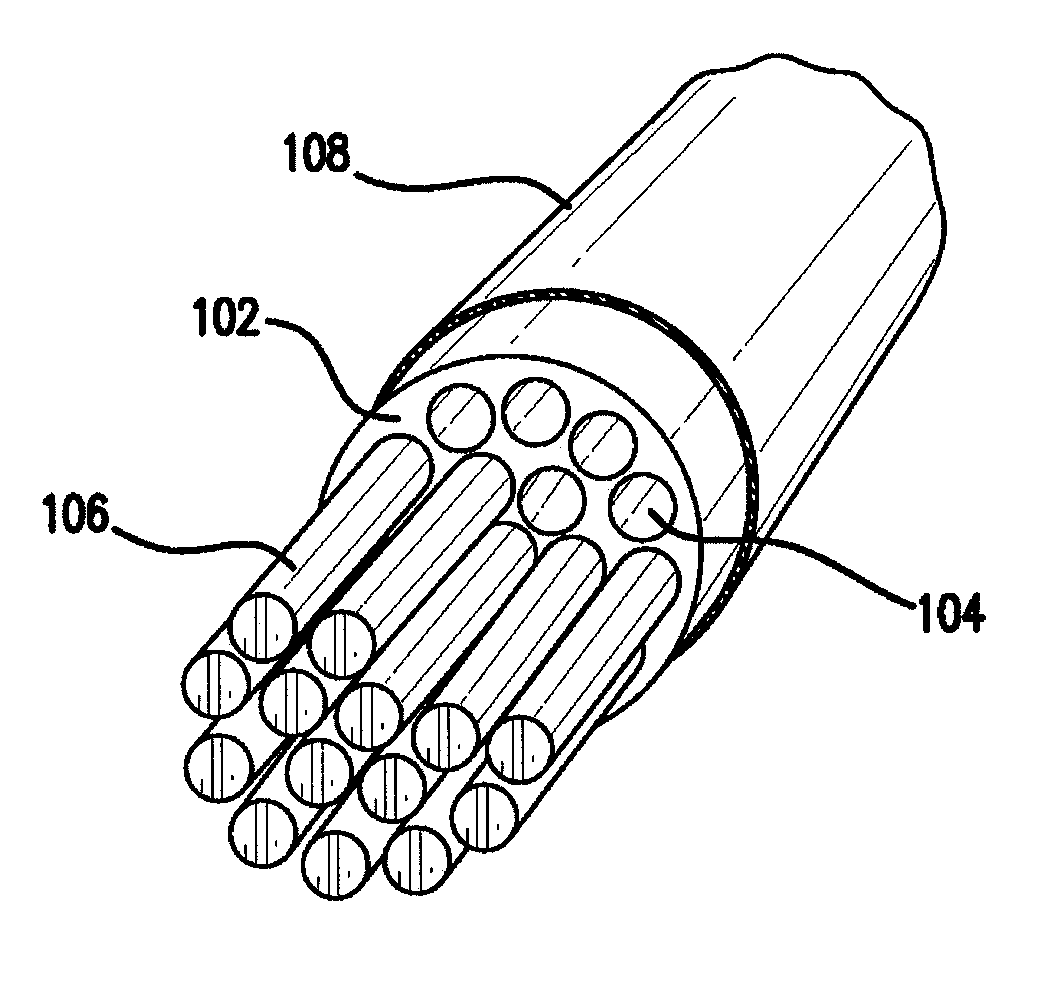Spinal curvature correction device
a correction device and spine technology, applied in the field of spine spine curvature correction devices, can solve the problems of significant reduction in patient motility, limited treatment modalities, and limited current percutaneous rod systems, and achieve the effect of replacing or augmenting endogenous structures
- Summary
- Abstract
- Description
- Claims
- Application Information
AI Technical Summary
Benefits of technology
Problems solved by technology
Method used
Image
Examples
Embodiment Construction
[0024]Turning to the drawings, FIG. 1 and FIG. 2 show a flexible multiple lumen tube 102, 202 wherein a plurality of channels or lumens 104, 204 extend longitudinally through the tube, and preferably, though substantially the entire length of the tube. Each of the channels or lumens is formed to receive, hold and support one or more of semi-rigid rods 106, 206. Each of the channels or lumens holds one or more semi-rigid rod in position within the tube. Each channel is preferred to be in a generally parallel relationship with each immediately adjoining channel. However, individual rods may differ in their orientation from those that are placed adjacent to thereto. Primary structural planes of individual semi-rigid rods may be axially rotated, and are not oriented in a parallel manner to the semi-rigid rods that are adjacent thereto.
[0025]Individual rods within the same device may have different cross-sections, with each rod designed to accomplish specific structural requirements, as ...
PUM
 Login to View More
Login to View More Abstract
Description
Claims
Application Information
 Login to View More
Login to View More - R&D
- Intellectual Property
- Life Sciences
- Materials
- Tech Scout
- Unparalleled Data Quality
- Higher Quality Content
- 60% Fewer Hallucinations
Browse by: Latest US Patents, China's latest patents, Technical Efficacy Thesaurus, Application Domain, Technology Topic, Popular Technical Reports.
© 2025 PatSnap. All rights reserved.Legal|Privacy policy|Modern Slavery Act Transparency Statement|Sitemap|About US| Contact US: help@patsnap.com



